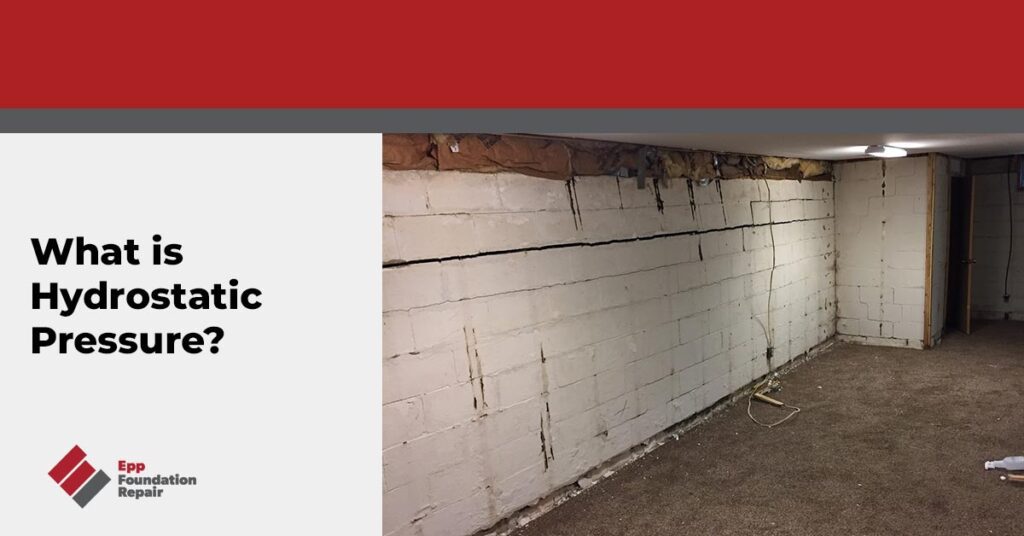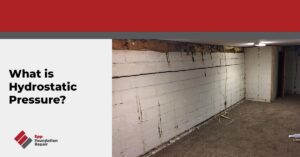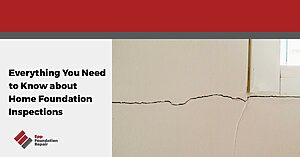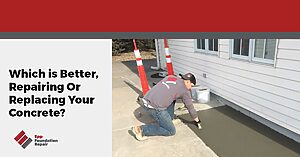Hydrostatic pressure can make basement walls bow inward and even crack. If you live in Nebraska and have a wet basement, there’s a good chance hydrostatic pressure is the cause.
What causes hydrostatic pressure?
Hydrostatic pressure happens when the soil around your home’s foundation gets saturated with water that can’t drain off. If the hydrostatic pressure isn’t relieved, it will push against your foundation walls.
Hydrostatic pressure pushes water through the wall
Since concrete is a porous material, once the hydrostatic pressure in the soil becomes too great, it can cause water leakage into your basement. The pressure literally pushes the water through the wall.
Hydrostatic pressure can cause a wall to bow inward and even crack
If the hydrostatic pressure becomes too high, it can start to crack and bow your foundation walls.
Since hydrostatic pressure results from too much water in the soil around your foundation, the pressure on your walls ebbs and flows with the seasons. The problem could get worse during rainy months as the soil becomes over-saturated and get better during dry months when there is little to no groundwater in the soil around your foundation.
How to fix hydrostatic pressure in a basement
You can relieve hydrostatic pressure on a basement wall by controlling groundwater. The best way to do this is by installing a drain tile system. There are two types of drain tile systems – interior and exterior – and they both work by preventing excess water from building up in the soil around and under the foundation. For more information about how they work, see How Does A Drain Tile System Work?
Other things you can do to prevent excess water from building up in the soil include,
- If necessary, regrade your home’s yard so that it slopes away from the foundation.
- Clean your gutters regularly so water won’t spill over the side of the foundation and into the soil.
- Install downspout extensions, if necessary. Short downspouts dump water too close to the foundation. Extensions are inexpensive, easy to install, and direct water away from the foundation before releasing it.
- Don’t plant water-hungry vegetation next to the foundation.
If you’re struggling with a wet basement and you’re in our service area in Nebraska, Iowa, Kansas, or Missouri, contact us today for a free inspection and repair estimate.







